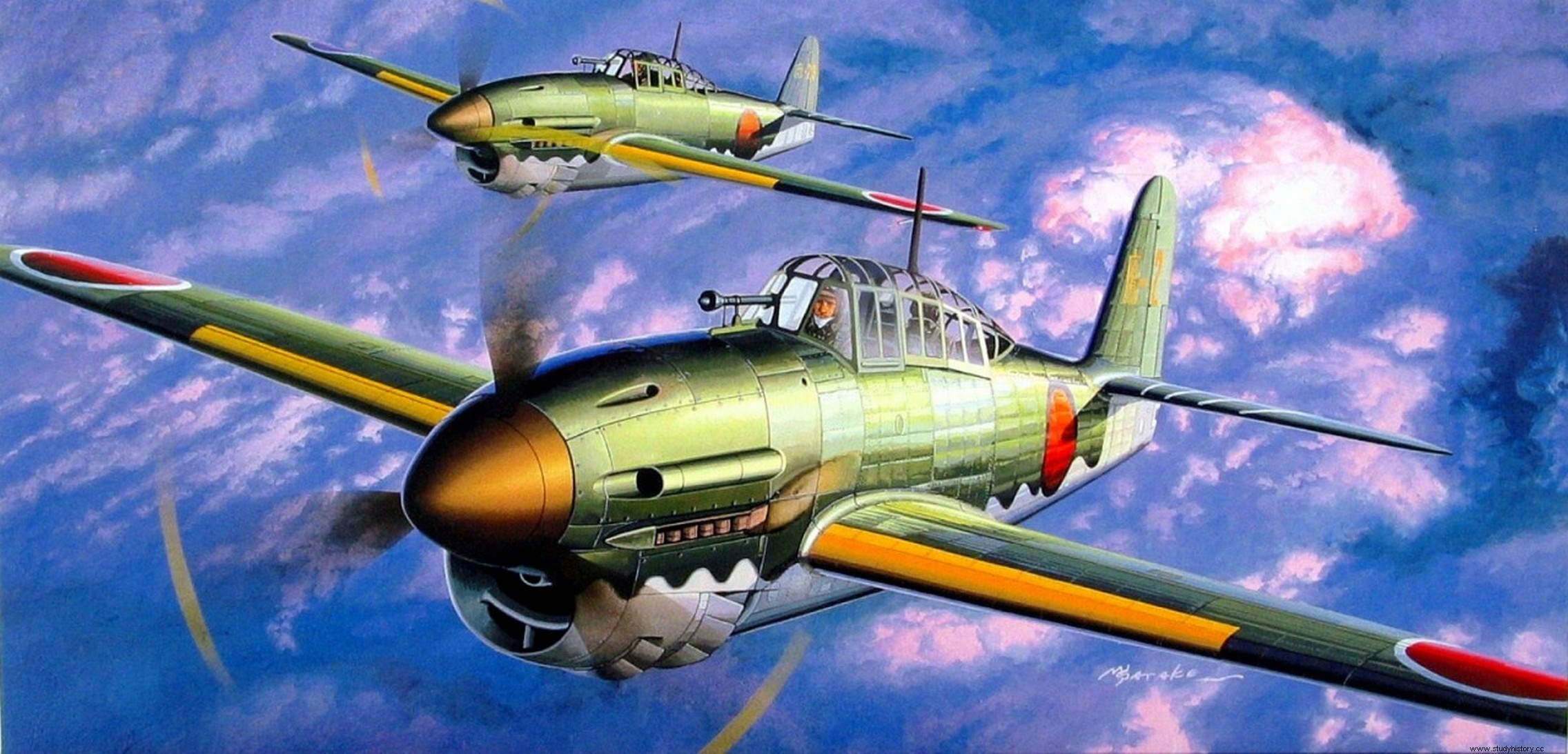The kamikaze , the infamous suicide pilots used by the Japanese army during World War II, are well known to the general public. Today we are going to tell a somewhat lesser known story, which even today is still shrouded in mystery and controversy. Seventy years later, it is not known for sure what really happened. We are talking about the last kamikaze flight mission of the war that, to make matters worse, took place just hours after Japan announced its surrender on August 15, 1945. The last kamikaze was, ironies of history, the same man who he had sent dozens of young people to their deaths on as many missions with no return. Commander-in-Chief of the Rising Sun Navy Air Arm, Vice Admiral Matome Ugaki .

Vice Admiral Ugaki in dress uniform
Graduated with honors from the Imperial Naval Academy in 1912, Ugaki was part of the elite of the Japanese Navy officers. Before the war against the US broke out, he had commanded the cruiser Yakumo and the battleship Hyuga . Once hostilities broke out in the Pacific, he served as second-in-command to the legendary Admiral Yamamoto . , the man who led the assault on Pearl Harbor. Promoted to vice admiral in 1942, Ugaki was traveling alongside Yamamoto himself on the fateful day the plane carrying them was shot down by American fighters over Bouganville Island. The Imperial Navy lost its most brilliant strategist that day, but Ugaki miraculously made it out alive. He was one of only three survivors of the disaster. If luck had wanted it to be his plane and not Yamamoto's that had burst into a thousand pieces, the fate of Japan in the remainder of the war would probably have been different. Very different.
Because Ugaki, once recovered from his wounds and after dodging death once again in the debacle of the Japanese fleet in the Leyte Gulf, was put in charge of a very particular shock force. As particular as his name in Japanese indicates, Tokkotai , "special attack squad". What we know in the West as kamikaze pilots .
In February 1945, Ugaki commanded the entire Imperial Navy air force on Okinawa. In one of the harshest battles of the entire Pacific War, Ugaki launched wave after wave of kamikaze attacks on the American fleet, with more devastating results for the Japanese themselves than for the Americans. After some initial successes that invited the optimism of the high command, when it came to the truth the effectiveness of the kamikaze program proved to be quite modest. The idea of a kamikaze =an enemy ship eliminated , which was the basis of this suicidal doctrine, was only fulfilled on a few occasions. The American aircraft carriers continued to be the masters of the seas and dozens of kamikaze pilots would do nothing but die uselessly week after week. American fighters, always overwhelmingly outnumbered in the Pacific skies, used to shoot them down before they could hit any targets. It was clear that the kamikaze were not going to save Japan from defeat, but Ugaki and the Navy high command did not give up. In the summer of 1945, once Okinawa was lost and with the task force approaching more and more to Japanese shores, Ugaki gave the order to prepare the final assault. Hundreds of suicide planes and submarines would drop on enemy ships. The last desperate attempt to avoid the inevitable.

Yokosuka D4Y Suisei
But that final combat would not come to pass. On August 15, 1945, in a historic radio intervention broadcast throughout the country, Emperor Hirohito announced the unconditional surrender of Japan. The announcement took place at noon, and in it he urged the Army and Navy to lay down their arms. But Admiral Ugaki, for the first (and last) time in his life, decided not to obey the direct order of his emperor. At 4:30 p.m., dressed in his daily uniform but without insignia of any kind, he boarded a Yokosuka D4Y Suisei two-seater plane. and he set out from Oita Air Base on one last kamikaze mission. Ten other planes went with him, heading for the outskirts of Okinawa, as scheduled in advance on the agenda. In his diary he wrote that he had not received any official ceasefire order. He also noted, perhaps by way of apology, that he was solely responsible for the failure of the kamikaze strategy.

Ugaki before leaving on his last mission
The last message preserved from Ugaki's squad is from 7:24 p.m. on the same day. He radioed the base that they had sighted his target, an American flotilla, and were preparing to attack him. Nothing more was ever heard of Ugaki. US Navy records do not record any kamikaze attacks on that day. Three of the Suisei who left with Ugaki had to return to base due to engine problems; the other eight remaining aircraft were most likely shot down by American anti-aircraft fire, but their fate has never been confirmed with complete certainty.
The only thing certain is that they never returned. The next morning, the crew of an American speedboat operating in the area discovered the remains of a crashed aircraft on the small island of Iheyajima, north of Okinawa. It is believed that it could have been Ugaki's. The soldiers buried the bodies on the same beach where they were found. Thus ended the last kamikaze mission of the war, with a result as useless as all the previous ones . But this one had a point of poetic justice. When seeing off suicide pilots about to take off, which he always did personally, Ugaki liked to tell them that he himself would soon share their fate in following them to their deaths. At least, he knew how to be faithful to his word until the end.
Contributed by R. Ibarzabal , from Samurai Stories
Sources:Blossoms in the Wind Human Legacies of the Kamikaze – M.G. Sheftall, Japanese Aircraft
